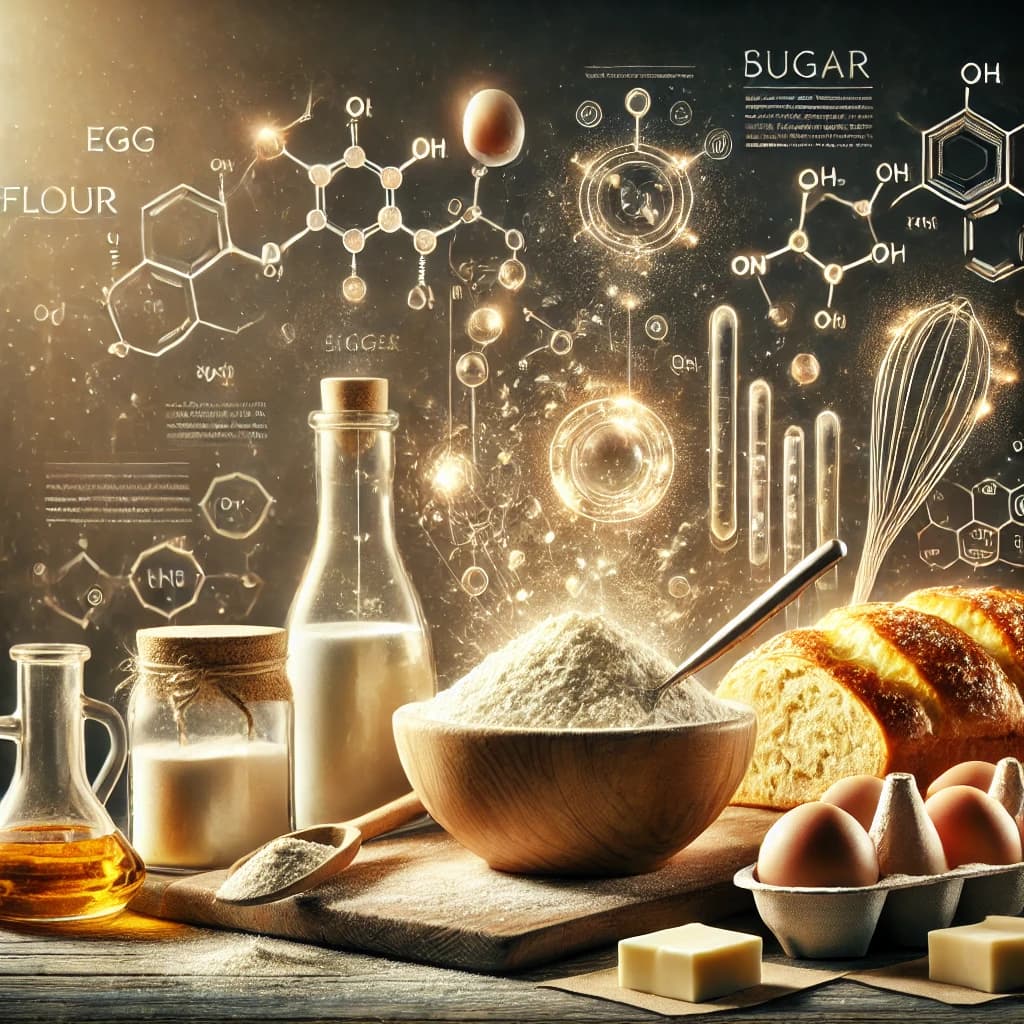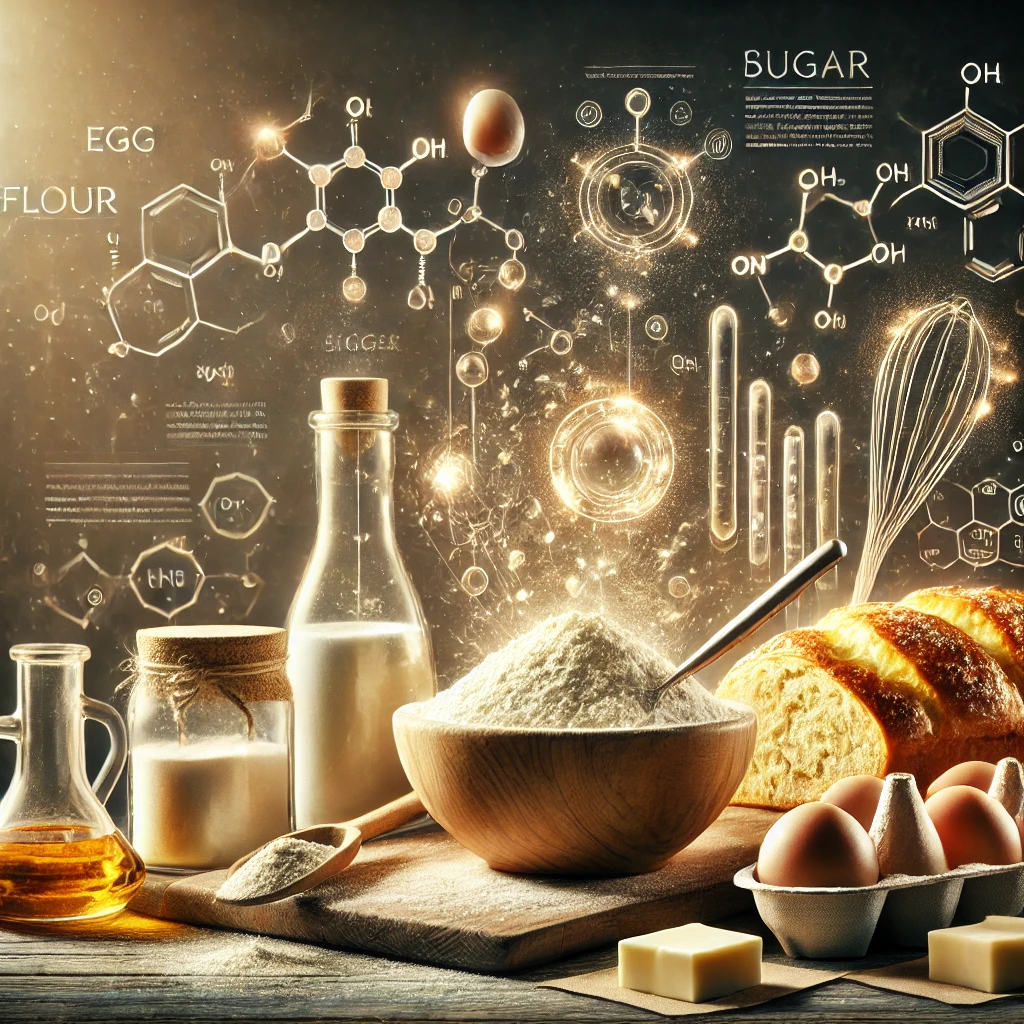The Science Behind Baking

The Science Behind Baking
Have you ever taken a cake out of the oven and marvelled at how it rose, browned, and filled the kitchen with that irresistible aroma?
Behind every golden crust and fluffy crumb is a quiet but powerful transformation — a series of chemical reactions that turn everyday ingredients into something magical.
In this article, we explore the science behind baking: what really happens when flour, eggs, butter, and sugar come together under heat. Whether you’re a curious beginner or a seasoned home baker, understanding the “why” behind your bakes can take your skills — and confidence — to the next level.

Ever wondered why your cake rises, browns, or smells so good fresh from the oven? It’s not just magic — it’s science.
1. Flour: More Than Just the Base
Flour, the foundation of many baked goods, is fascinating when viewed through a scientific lens. The gluten in flour, a protein complex, is essential for structure and texture. When mixed with water, gluten proteins form an elastic network that traps gases, crucial for bread's rise and chewy texture. Different flours have varying gluten levels, affecting the final product's texture - from the sturdy structure of bread flour to the tender crumb of cake flour.
2. Yeast: The Art of Fermentation
Yeast is a living organism that plays a crucial role in bread making. It ferments the sugars in the dough, producing carbon dioxide and alcohol. This process not only causes the dough to rise but also imparts unique flavors. The type of yeast (active dry, instant, fresh) and fermentation time can greatly influence the texture and taste of bread.
3. Sugar: Sweetness and Structure
Sugar in baking is not just for sweetness; it's pivotal for texture and color. Creaming sugar with butter introduces air, aiding in leavening cookies and cakes. Caramelisation of sugar at high temperatures contributes to the appealing golden-brown crust. Sugar also helps in moisture retention, keeping baked goods soft.
4. Fats: Butter, Oils, and Beyond
Fats like butter, oils, and shortening contribute to the tenderness, flavor, and texture of baked goods. They shorten gluten strands by coating the flour, resulting in a tender crumb. The type of fat and how it's incorporated can dramatically change the outcome, from flaky pie crusts to moist cakes.
5. Eggs: Versatile Binders
Eggs are multifunctional - they bind ingredients, provide structure, emulsify, and add moisture. The proteins in eggs coagulate when heated, giving structure to cakes and cookies. Egg yolks, rich in fats, add richness and color, while egg whites can be whipped to incorporate air, contributing to leavening.
6. Leavening Agents: Baking Soda and Baking Powder
Baking soda and baking powder are chemical leaveners that release carbon dioxide, helping baked goods rise. Baking soda reacts with acidic components, while baking powder contains both an acid and a base, reacting with liquid and heat. The right balance is crucial for the desired texture and avoiding any residual chemical taste.
7. Salt: Enhancing Flavors
Often overlooked, salt plays a critical role in baking. It strengthens gluten, controls yeast fermentation, and most importantly, enhances flavors, balancing the sweetness in baked goods.
The world of baking is rich with scientific wonders. Understanding the role and interaction of each ingredient can elevate our baking from a simple recipe-following exercise to a delightful exploration of culinary science. As you experiment with these ingredients, you’ll gain a deeper appreciation for the craft of baking, leading to even more delicious and satisfying creations.
Share your thoughts
Did you find this history article interesting? Rate it below and let others know!